-
81 Lanston, Tolbert
SUBJECT AREA: Paper and printing[br]b. 3 February 1844 Troy, Ohio, USAd. 18 February 1913 Washington, DC, USA[br]American inventor of the Monotype typesetting machine.[br]Although reared in a farming community, Lanston was able to develop his mechanical talent. After serving in the American Civil War he secured a clerkship in the Pensions Office in Washington, where he remained for twenty-two years. He studied law in his spare time and was called to the Bar. At the same time, he invented a whole variety of mechanical devices, many of which he patented. Around 1883 Lanston began taking an interest in machines for composing printers' type, probably stimulated by Ottmar Mergenthaler, who was then in Washington and working in this field. Four years' work were rewarded on 7 June 1887 by the grant of a patent, followed by three more, for a machine "to produce justified lines of type". The machine, the Monotype, consisted of two components: first a keyboard unit produced a strip of paper tape with holes punched in patterns corresponding to the characters required; this tape controlled the matrices in the caster, the second and "hot metal" component, from which types were ejected singly and fed to an assembly point until a complete line of type had been formed. Lanston resigned his post and set up the Lanston Type Machine Company in Washington. He laboured for ten years to convert the device defined in his patents into a machine that could be made and used commercially. In 1897 the perfected Monotype appeared. The company was reorganized as the Lanston Monotype Manufacturing Company of Philadelphia, and Lanston devoted himself to promoting and improving the machine. Monotype, with Mergenthaler's Linotype, steadily supplanted hand-setting and the various inadequate mechanical methods that were then in use, and by the 1920s they reigned supreme, until the 1960s, when they themselves began to be superseded by computer-controlled photosetting methods.[br]Principal Honours and DistinctionsFranklin Institute Cresson Gold Medal 1896.Further ReadingObituary, 1913, American Printer (March).L.A.Legros and J.C.Grant, 1916, Typographical Printing Surfaces, London.J.Moran, 1964, The Composition of Reading Matter, London.LRD -
82 Nyquist, Harry
[br]b. 7 February 1889 Nilsby, Swedend. 4 April 1976 Texas, USA[br]Swedish-American engineer who established the formula for thermal noise in electrical circuits and the stability criterion for feedback amplifiers.[br]Nyquist (original family name Nykvist) emigrated from Sweden to the USA when he was 18 years old and settled in Minnesota. After teaching for a time, he studied electrical engineering at the University of North Dakota, gaining his first and Master's degrees in 1915 and 1916, and his PhD from Yale in 1917. He then joined the American Telegraph \& Telephone Company, moving to its Bell Laboratories in 1934 and remaining there until his retirement in 1954. A prolific inventor, he made many contributions to communication engineering, including the invention of vestigial-side band transmission. In the late 1920s he analysed the behaviour of analogue and digital signals in communication circuits, and in 1928 he showed that the thermal noise per unit bandwidth is given by 4 kT, where k is Boltzmann's constant and T the absolute temperature. However, he is best known for the Nyquist Criterion, which defines the conditions necessary for the stable, oscillation-free operation of amplifiers with a closed feedback loop. The problem of how to realize these conditions was investigated by his colleague Hendrik Bode.[br]Principal Honours and DistinctionsFranklin Institute Medal 1960. Institute of Electrical and Electronics Engineers Medal of Honour 1960; Mervin J.Kelly Award 1961.Bibliography1924, "Certain factors affecting telegraph speed", Bell System Technical Journal 3:324. 1928, "Certain topics in telegraph transmission theory", Transactions of the AmericanInstitute of Electrical Engineers 47:617.1928, "Thermal agitation of electric charge in conductors", Physical Review 32:110. 1932, "Regeneration theory", Bell System Technical Journal 11:126.1940, with K.Pfleger, "Effect of the quadrature component in single-sideband transmission", Bell System Technical Journal 19:63.Further ReadingBell Telephone Laboratories, 1975, Mission Communications.See also: Shannon, Claude ElwoodKF -
83 Williams, Sir Frederic Calland
SUBJECT AREA: Electronics and information technology[br]b. 26 June 1911 Stockport, Cheshire, Englandd. 11 August 1977 Prestbury, Cheshire, England[br]English electrical engineer who invented the Williams storage cathode ray tube, which was extensively used worldwide as a data memory in the first digital computers.[br]Following education at Stockport Grammar School, Williams entered Manchester University in 1929, gaining his BSc in 1932 and MSc in 1933. After a short time as a college apprentice with Metropolitan Vickers, he went to Magdalen College, Oxford, to study for a DPhil, which he was awarded in 1936. He returned to Manchester University that year as an assistant lecturer, gaining his DSc in 1939. Following the outbreak of the Second World War he worked for the Scientific Civil Service, initially at the Bawdsey Research Station and then at the Telecommunications Research Establishment at Malvern, Worcestershire. There he was involved in research on non-incandescent amplifiers and diode rectifiers and the development of the first practical radar system capable of identifying friendly aircraft. Later in the war, he devised an automatic radar system suitable for use by fighter aircraft.After the war he resumed his academic career at Manchester, becoming Professor of Electrical Engineering and Director of the University Electrotechnical Laboratory in 1946. In the same year he succeeded in developing a data-memory device based on the cathode ray tube, in which the information was stored and read by electron-beam scanning of a charge-retaining target. The Williams storage tube, as it became known, not only found obvious later use as a means of storing single-frame, still television images but proved to be a vital component of the pioneering Manchester University MkI digital computer. Because it enabled both data and program instructions to be stored in the computer, it was soon used worldwide in the development of the early stored-program computers.[br]Principal Honours and DistinctionsKnighted 1976. OBE 1945. CBE 1961. FRS 1950. Hon. DSc Durham 1964, Sussex 1971, Wales 1971. First Royal Society of Arts Benjamin Franklin Medal 1957. City of Philadelphia John Scott Award 1960. Royal Society Hughes Medal 1963. Institution of Electrical Engineers Faraday Medal 1972. Institute of Electrical and Electronics Engineers Pioneer Award 1973.BibliographyWilliams contributed papers to many scientific journals, including Proceedings of the Royal Society, Proceedings of the Cambridge Philosophical Society, Journal of the Institution of Electrical Engineers, Proceedings of the Institution of Mechanical Engineers, Wireless Engineer, Post Office Electrical Engineers' Journal. Note especially: 1948, with J.Kilburn, "Electronic digital computers", Nature 162:487; 1949, with J.Kilburn, "A storage system for use with binary digital computing machines", Proceedings of the Institution of Electrical Engineers 96:81; 1975, "Early computers at Manchester University", Radio \& Electronic Engineer 45:327. Williams also collaborated in the writing of vols 19 and 20 of the MIT RadiationLaboratory Series.Further ReadingB.Randell, 1973, The Origins of Digital Computers, Berlin: Springer-Verlag. M.R.Williams, 1985, A History of Computing Technology, London: Prentice-Hall. See also: Stibitz, George R.; Strachey, Christopher.KFBiographical history of technology > Williams, Sir Frederic Calland
-
84 feral host
-
85 count
[̘.kaunt]cash count подсчет наличности component count вчт. число компонентов count выступать с изложением дела count излагать дело count изложение дела count итог count пересчитывать count подсчет count подсчитывать count пункт искового заявления count пункт обвинения count пункт обвинительного акта count считать count down вчт. считать в обратном направлении count forward вчт. считать в прямом направлении count out исключать count out откладывать совещание из-за отсутствия кворума count over пересчитывать count up вчт. считать в прямом направлении flash count обозначение текущей цены важнейших акций на ленте тикера, когда информация запаздывает более чем на 5 мин physical count подсчет материально-производственных запасов physical count подсчет остатков в натуре pin count вчт. число выводов principal count основной пункт обвинения raster count вчт. число элементов растра record count вчт. количество записей reference count вчт. контрольный счет repeat count вчт. повторный счет security count инвентаризация ценных бумаг sequence count вчт. элемент последовательности stock count инвентаризация запасов transition count вчт. число логических переходов -
86 host
1. хозяин2. оказывать гостеприимство3. родной -
87 raceway
- труба для электропроводки
- система специальных кабельных коробов
- система кабельных коробов
- рабочая поверхность подшипника
- прямая секция кабельного короба
- канал для электропроводки
- кабельный канал
- кабелепровод
- водопроводный канал
кабелепровод
Любой канал, обеспечивающий прокладку кабелей, в том числе, металлические и пластмассовые трубопроводы, рукава, каналы в полах, сотовые фальшполы, сетчатые лотки, желоба и кабель каналы (ISO/IEC 11801).
[ http://www.iks-media.ru/glossary/index.html?glossid=2400324]
кабелепровод
трасса
кабельный канал
Трасса или структура, предназначенная или используемая для прокладки и монтажа телекоммуникационных кабелей.
[ http://www.lanmaster.ru/SKS/DOKUMENT/568b.htm]Тематики
- СКС (структурированные кабельные системы)
- электропроводка, электромонтаж
EN
кабельный канал
Кабельным каналом называется закрытое и заглубленное (частично или полностью) в грунт, пол, перекрытие и т. п. непроходное сооружение, предназначенное для размещения в нем кабелей, укладку, осмотр и ремонт которых возможно производить лишь при снятом перекрытии.
[ПУЭ. Раздел 2]
кабельный канал
Элемент системы электропроводки, расположенный над землей или полом или в земле или в полу, открытый, вентилируемый или замкнутый, размеры которого не позволяют вход людей, но обеспечивают доступ к трубам и (или) кабелям по всей длине в процессе монтажа и после него.
Примечание - Кабельный канал может составлять или не составлять часть конструкции здания
[ ГОСТ Р МЭК 60050-826-2009]
канал кабельный
Подземный непроходной канал, предназначенный для размещения электрических кабелей
[Терминологический словарь по строительству на 12 языках (ВНИИИС Госстроя СССР)]EN
cable channel
element of a wiring system above or in the ground or floor, open, ventilated or closed, and having dimensions which do not permit the entry of persons but allow access to the conduits and/or cables throughout their length during and after installation
NOTE – A cable channel may or may not form part of the building construction.
[IEV number 826-15-06]FR
caniveau, m
élément de canalisation situé au-dessus ou dans le sol ou le plancher, ouvert, ventilé ou fermé, ayant des dimensions ne permettant pas aux personnes d'y circuler, mais dans lequel les conduits ou câbles sont accessibles sur toute leur longueur, pendant et après installation
NOTE – Un caniveau peut ou non faire partie de la construction du bâtiment.
[IEV number 826-15-06]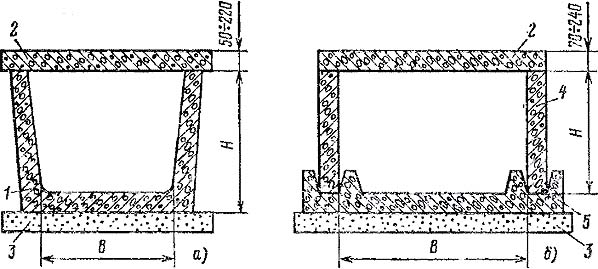
Кабельные каналы:
а — лотковый типа ЛК; б — из сборных плит типа СК:1 — лоток; 2 — плита перекрытия; 3 — подготовка; 4 — плита стеновая; 5 — основание
Высота кабельных каналов в свету не ограничивается, но бывает не более 1200 мм. Ширина каналов определяется в зависимости от размеров применяемых кабельных конструкций из условия сохранения прохода не менее 300 мм при глубине канала до 600 мм, 450 мм — от более 600 до 900 мм, 600 мм при более 900 мм.
Полы в каналах выполняют с уклоном не менее 0,5% в сторону водосборников или ливневой канализации.
Для крепления кабельных конструкций в стенах каналов через каждые 0,8—1 м (по длине) устанавливают закладные детали. При заводском изготовлении стеновых панелей детали устанавливают на предприятии-изготовителе. Закладные детали в каналах глубиной до 600 мм располагают в один ряд, при большей глубине каналов — в два ряда.
В местах поворота и разветвления трассы устраивают уширительные камеры, размеры которых выбирают с учетом допускаемого радиуса изгиба прокладываемого кабеля.
[ http://forca.ru/knigi/oborudovanie/priemka-zdaniy-i-sooruzheniy-pod-montazh-elektrooborudovaniya-11.html]Недопустимые, нерекомендуемые
Примечание(1)- Мнение автора карточкиТематики
- кабели, провода...
- электропроводка, электромонтаж
- электроустановки
Обобщающие термины
EN
- cable channel
- cable duct
- cable trench
- cabling
- conduit
- duct
- electric raceway
- raceway
- trench for cabling
DE
FR
- caniveau du câble
- caniveau, m
- conduite du câble
канал для электропроводки
—
[Я.Н.Лугинский, М.С.Фези-Жилинская, Ю.С.Кабиров. Англо-русский словарь по электротехнике и электроэнергетике, Москва, 1999 г.]Тематики
- электротехника, основные понятия
EN
прямая секция кабельного короба
Основной компонент системы кабельных коробов, состоящий из основания (корпуса) со съемной или открывающейся крышкой
[ ГОСТ Р МЭК 61084-1 2007]
прямая секция
Для прямолинейных участков электропроводки без ответвлений и для прямолинейных участков электропроводки с устройствами для ответвлений одиночными кабелями
[ ГОСТ 20803-81]
прямая секция кабельного короба
-
[IEV number 442-02-37]EN
trunking length
the main component of a cable trunking system comprising a base with a removable cover
[IEV number 442-02-37]FR
(longueur de) goulotte
élément principal d'un système de goulottes constitué d'un fond avec un couvercle amovible
[IEV number 442-02-37]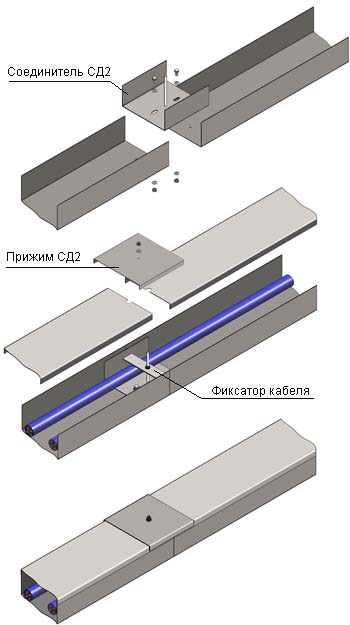
Прямая секция кабельного короба
[ http://mks.montak.ru/catalog/182/232]Тематики
- изделие электромонтажное
- электропроводка, электромонтаж
EN
DE
FR
рабочая поверхность подшипника
—
[А.С.Гольдберг. Англо-русский энергетический словарь. 2006 г.]Тематики
EN
система кабельных коробов
Система замкнутых оболочек, состоящих из основания (корпуса) и съемной крышки, предназначенная дляполного заключения в себяпрокладки внутри неё изолированных проводов, кабелей, шнуров и (или) для размещения другого электрического оборудования, включая оборудование информационных технологий.
[ ГОСТ Р МЭК 60050-826-2009]
система кабельных коробов
Система замкнутых оболочек, состоящих из корпуса со съемной или открывающейся крышкой, предназначенная для прокладки внутри нее изолированных проводов, кабелей и шнуров и/или для размещения другого электрооборудования.
[ ГОСТ Р МЭК 61084-1 2007]
кабельнесущая система
Система закрытых оболочек, допускающая размещение изолированных проводов на базе подвижных поверхностей и предназначенная для полной защиты изолированных проводов, кабелей, шнуров, а также для размещения другого электрооборудования.
система кабельных коробов
Система закрываемых полых конструкций, состоящая из основания (корпуса) и съемной крышки, предназначенная для прокладки внутри них и защиты от механических повреждений кабелей, шнуров, изолированных проводов и (или) для размещения другого электрического оборудования, включая оборудование информационных технологий.
[ ГОСТ Р МЭК 60204-1-2007]
Примечание. Синим цветом обозначен вариант, предлагаемый автором карточки.EN
cable trunking system
a system of closed enclosures comprising a base with a removable cover, intended for the complete surrounding of insulated conductors, cables, cords and/or for the accommodation of other electrical accessories
Source: 826-06-04 MOD
[IEV number 442-02-34]
cable trunking system
system of closed enclosures comprising a base with a removable cover, intended for the complete surrounding of insulated conductors, cables, cords and/or for the accommodation of other electric equipment including information technology equipment
Source: 442-02-34 MOD
[IEV number 826-15-04]
[IEC 60204-1-2006]FR
système de goulottes
ensemble d'enveloppes fermées munies d'un fond avec un couvercle amovible et destiné à la protection complète de conducteurs isolés et de câbles, ou au logement d'autre petit appareillage électrique
Source: 826-06-04 MOD
[IEV number 442-02-34]
système de goulottes, m
ensemble d'enveloppes fermées, munies d'un fond avec un couvercle amovible et destiné à la protection complète des conducteurs isolés et des câbles et/ou au logement d'autres matériels électriques y compris des matériels de traitement de l'information
Source: 442-02-34 MOD
[IEV number 826-15-04]Обратите внимание!
Различают два вида систем кабельных коробов:
1) (просто) система кабельных коробов (cable trunking system) - система любого сечения, но обязательно с крышкой;
2) система специальных кабельных коробов (cable ducting system) - система некруглого сечения и без крышек.
Примечание. В ПУЭ короб без крышки называется глухой короб (см. кабельный короб)
[Автор карточки]
Параллельные тексты EN-RU
Raceways shall be one- or two-piece design with base and snap-on cover, or three-piece design with base and two snap-on covers which snap side by side on a common base.
[Legrand/Wiremold. SECTION 16130 RACEWAY AND BOXES]В состав поставки входят специальные (глухие) кабельные короба, а также кабельные короба, состоящие из основания и защелкивающейся крышки, или из основания и двух защелкивающихся крышек.
[Перевод Интент]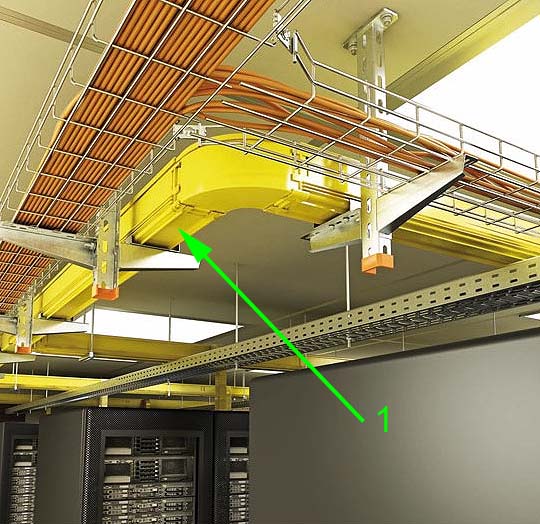
1 - Система кабельных коробов
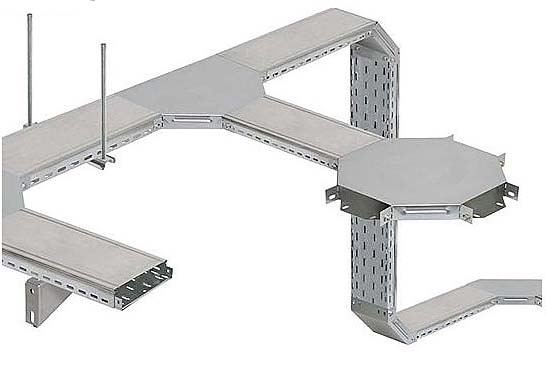
Система кабельных коробов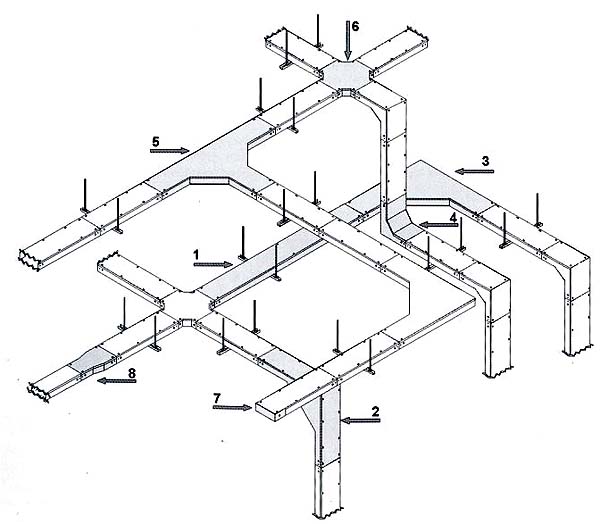
Система кабельных коробов
Недопустимые, нерекомендуемые
Примечание(1) - мнение автора карточкиТематики
- изделие электромонтажное
- электропроводка, электромонтаж
EN
DE
FR
система специальных кабельных коробов
Система замкнутых оболочек некруглого сечения, не имеющая съемных или открывающихся крышек, предназначенная для прокладки изолированных проводов, кабелей и шнуров в электрических установках, допускающая их затяжку в нее и их замену
[ ГОСТ Р МЭК 60050-826-2009]
система специальных кабельных коробов
Система коробовпрямоугольногонекруглого сечения, не имеющих съемных или открывающихся крышек, предназначенная для прокладки внутри нее изолированных проводов и кабелей и обеспечивающая возможность затяжки в короба проводов и кабелей и их замены.
[ ГОСТ Р МЭК 61084-1 2007]EN
cable ducting system
a system of closed enclosures of non-circular section, for insulated conductors, cables and cords in electrical installations, allowing them to be drawn in and replaced
[IEV number 442-02-35]FR
système de conduits profilés
ensemble d'enveloppes fermées, de section non circulaire, destiné à la mise en place ou au remplacement de conducteurs isolés ou de câbles, par tirage, dans des installations électriques
[IEV number 442-02-35]Обратите внимание!
Различают два вида систем кабельных коробов:
1) (просто) система кабельных коробов (cable trunking system) - система любого сечения, но обязательно с крышкой;
2) система специальных кабельных коробов (cable ducting system) - система некруглого сечения и без крышек.
[Интент]

Рис. Panduit®
Система специальных кабельных коробов

Рис. Panduit®
Прямая секция системы специальных кабельных коробовТематики
- изделие электромонтажное
- электропроводка, электромонтаж
EN
DE
- geschlossener Elektroinstallationskanal, m
FR
труба
Компонентзащищеннойтрубной электропроводки, имеющий, как правило, круглое поперечное сечение, предназначенный для прокладки изолированных проводов и(или) кабелей в электрических или коммуникационных установках, допускающий их затяжку в него и(или) их замену.
ПримечаниеСоединения труб должны быть достаточно плотными, чтобы изолированные провода и (или) кабели могли быть только затянуты, но не введены сбоку в просвет между трубами.
Трубы должны располагаться достаточно близко друг от друга, так чтобы отсутствовала возможность затянуть изолированные провода и (или) кабели в просвет между ними.
[ ГОСТ Р МЭК 60050-826-2009]
трубопроводтруба
Закрытый элемент кабельной конструкцииКомпонент трубной электропроводки круглого или иного сечения для прокладки в электрических установках кабелей и/или изолированных проводови/или кабелей в электрических установках,позволяющий производить ихвыемкузатяжку и/или замену.
Примечание
Трубопроводы должны быть закрыты таким образом, чтобы имелась возможность вставлять в них изолированные провода и/или кабели.
Трубы должны располагаться достаточно близко друг от друга, так чтобы отсутствовала возможность затянуть изолированные провода и (или) кабели в просвет между ними.
[ ГОСТ Р МЭК 60204-1-2007]
Примечание. Синим цветом обозначен вариант, предлагаемый автором карточки.EN
conduit
a part of a closed wiring system of generally circular cross section for insulated conductors and/or cables in electrical or communication installations, allowing them to be drawn in and/or replaced
Source: 826-06-03 MOD
[IEV number 442-02-03]
conduit
part of a closed wiring system of circular or non-circular cross-section for insulated conductors and/or cables in electrical installations, allowing them to be drawn in and/or replaced
NOTE Conduits should be sufficiently close-jointed so that the insulated conductors and/or cables can only be drawn in and not inserted laterally.
[IEV 826-06-03]
[IEC 60204-1-2006]
raceway
A tube that encloses and protects electric wires.
[ http://www.answers.com/topic/raceway]FR
conduit
élément d'un système de canalisation fermé de section droite généralement circulaire, destiné à la mise en place par tirage ou au remplacement des conducteurs ou des câbles isolés dans les installations électriques ou de télécommunication
Source: 826-06-03 MOD
[IEV number 442-02-03]См. также пластмассовые трубы для электропроводок
См. также стальные трубы для электропроводок
4.1. Для прокладки проводов и кабелей необходимо применять специальные трубы для электропроводок: гладкие из непластифицированного ПВХ по ТУ 6-19-215-86, прил. 2; гладкие из вторичного ПЭ по ТУ 63.178-103-85, прил. 3; гладкие из наполненного ПЭ по ТУ 6-19-051-575-85, прил. 4; гофрированные из НПВХ по ТУ 6-19-051-419-84, прил. 5; гофрированные из ПЭ по ТУ 6-19-051-518-87, прил.6; гофрированные из вторичного ПЭ по ТУ 63.178-117-87, прил.7. При отсутствии указанных труб применяют технологические трубы: гладкие напорные из НПВХ по ТУ 6-19-231-87, прил.8; гладкие напорные из ПЭ низкого и высокого давления по ГОСТ 18599-83, прил. 9; гладкие из ПП по ТУ 38-102-100-76, прил. 10; трубы из вторичного ПЭ по ТУ 6-19-133-79, прил. П.
...
4.3. Применяют также трубы стальные электросварные по ГОСТ 10704-76 сортамент, прил. 12, легкие и обыкновенные водогазопроводные по ГОСТ 3262-75*, прил.13.[Министерство архитектуры, строительства и жилищно-коммунального хозяйства. Концерн «ЭЛЕКТРОМОНТАЖ». Инструкция по монтажу электропроводок в трубах]
Недопустимые, нерекомендуемые
Примечание(1)- Мнение автора карточкиТематики
- электропроводка, электромонтаж
Синонимы
EN
DE
FR
Англо-русский словарь нормативно-технической терминологии > raceway
-
88 trunking length
прямая секция кабельного короба
Основной компонент системы кабельных коробов, состоящий из основания (корпуса) со съемной или открывающейся крышкой
[ ГОСТ Р МЭК 61084-1 2007]
прямая секция
Для прямолинейных участков электропроводки без ответвлений и для прямолинейных участков электропроводки с устройствами для ответвлений одиночными кабелями
[ ГОСТ 20803-81]
прямая секция кабельного короба
-
[IEV number 442-02-37]EN
trunking length
the main component of a cable trunking system comprising a base with a removable cover
[IEV number 442-02-37]FR
(longueur de) goulotte
élément principal d'un système de goulottes constitué d'un fond avec un couvercle amovible
[IEV number 442-02-37]
Прямая секция кабельного короба
[ http://mks.montak.ru/catalog/182/232]Тематики
- изделие электромонтажное
- электропроводка, электромонтаж
EN
DE
FR
Англо-русский словарь нормативно-технической терминологии > trunking length
-
89 ducting length
прямая секция специального короба
Основной компонент системы специальных кабельных коробов, имеющий замкнутое прямоугольное поперечное сечение
[ ГОСТ Р МЭК 61084-1 2007]
прямая секция специального кабельного короба
-
[IEV number 442-02-38]EN
ducting length
the main component of a ducting system, characterized by a closed non-circular cross section
[IEV number 442-02-38]FR
longueur de conduit profilé
élément principal d'un système de conduits profilés caractérisé par une section transversale non circulaire fermée
[IEV number 442-02-38]Тематики
- изделие электромонтажное
- электропроводка, электромонтаж
EN
DE
FR
Англо-русский словарь нормативно-технической терминологии > ducting length
См. также в других словарях:
principal component analysis — ( PCA) A mathematical tool used to reduce the number of variables while retaining the original variability of the data The first principal component accounts for as much of the variability in the data as possible, and each succeeding component… … Financial and business terms
Principal component analysis — PCA of a multivariate Gaussian distribution centered at (1,3) with a standard deviation of 3 in roughly the (0.878, 0.478) direction and of 1 in the orthogonal direction. The vectors shown are the eigenvectors of the covariance matrix scaled by… … Wikipedia
Principal component regression — In statistics, principal component regression (PCR) is a regression analysis that uses principal component analysis when estimating regression coefficients.In PCR instead of regressing the independent variables (the regressors) on the dependent… … Wikipedia
Principal Component Analysis — Hauptkomponentenanalyse als Faktorenanalyse: Zwei Hauptkomponenten einer zweidimensionalen Punktwolke (orthogonal rotiert) Die Hauptkomponentenanalyse (englisch: Principal Component Analysis, PCA) ist ein Verfahren der multivariaten Statistik.… … Deutsch Wikipedia
Multilinear principal-component analysis — (MPCA) [1] is a mathematical procedure that uses multiple orthogonal transformations to convert a set of multidimensional objects into another set of multidimensional objects of lower dimensions. There is one orthogonal transformation for each… … Wikipedia
Kernel principal component analysis — (kernel PCA) is an extension of principal component analysis (PCA) using techniques of kernel methods. Using a kernel, the originally linear operations of PCA are done in a reproducing kernel Hilbert space with a non linear mapping.ExampleThe two … Wikipedia
Principal components analysis — Principal component analysis (PCA) is a vector space transform often used to reduce multidimensional data sets to lower dimensions for analysis. Depending on the field of application, it is also named the discrete Karhunen Loève transform (KLT),… … Wikipedia
Component analysis — may refer to: Principal component analysis Kernel principal component analysis Independent component analysis Neighbourhood components analysis ANOVA simultaneous component analysis Connected Component Analysis This disambiguation pag … Wikipedia
component — 01. There are three main [components] to the plan. 02. The various [components] are manufactured by different suppliers around the world, and assembled in our factory in Mexico. 03. The principal [component] of the Asian diet is rice. 04. They… … Grammatical examples in English
Principal geodesic analysis — In geometric data analysis and statistical shape analysis, principal geodesic analysis is a generalization of principal component analysis to a non Euclidean, non linear setting of manifolds suitable for use with shape descriptors such as medial… … Wikipedia
component — {{Roman}}I.{{/Roman}} noun ADJECTIVE ▪ basic, central, core, critical, crucial, essential, fundamental, important, integral, key … Collocations dictionary
